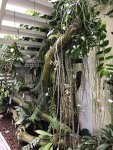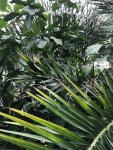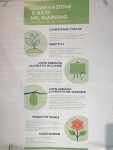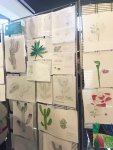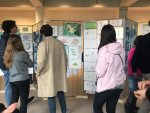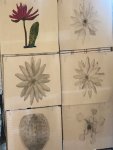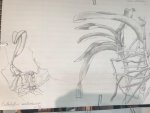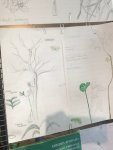accueil site > 45. Archives > Paysage et patrimoine > 12. Pedagogic tools > 17. Pedagogic tools > 09993. 30 - From scientific observation to artistic expression in the (...)
-
45. Archives
-
Paysage et patrimoine
-
01. Fiches pédagogiques
Disciplines
-
01. Teaching materials
Disciplines
-
02. Jardin sans frontière : une école pour développer les compétences -clés en Europe
- 04. Partenaires
- 05. Rencontres transnationales
- 14. À l’école du jardin. Mobilités de formation dans les jardins d’Europe
- 15. À l’école européenne du jardin. Paroles de formateurs sur leurs formations "entre pairs"
- 16. A l’école auropéenne du jardin. Paroles d’apprenants sur leurs mobilités Erasmus+
- 19. Petit glossaire "européen" du jardin
- 20. Dissémination
- 21. Exploitation locale du projet
- 03. Un nouvel Erasmus+ : Le bleu européen comme étendard contre l’exclusion des adultes
-
09. Erasmus+ partenariato
-
Cammini del Blu in Europa
- 01. Incontri transnazionali
- 05. Progetti blu di partners
- 10. Percorsi europei del Blu
- 20. Storie blu
- 40. Disseminazione
- 43. Transcultural Carpet Blue
- 45. Missive blu
- 46. Glossario blu
- 47. Schede didattiche "Pedagogia del colore blu in Europa"
- 48. Illustrazioni delle schede didattiche : Mostra delle opere degli studenti
-
Giardino senza frontiere. Una scuola per lo slivuppo di competenze chiave in Europa
- 04. Partners
- 05. Riunioni transnazionali
- 14. Alla scuola del giardino. Mobilità di formazione nei giardini d’Europa
- 15. Alla scuola del Giardino. Parole di formatori sul loro addestramento "tra pari"
- 16. Alla scuola del giardino. Parole dei discenti sul loro Erasmus + Mobilità
- 19. Piccolo glossario europeo del giardino
-
Cammini del Blu in Europa
-
11. Erasmus+ Partnership
- 01. Transnational Meetings
- 05. Blue Projects of partners
- 07. European roads of the Blue
- 10. Blue stories
- 40. Dissemination
- 43. Transcultural Carpet Blue
- 45. Blue Missives
- 46. Blue Glossary
- 48. Roads of the blue : the file
- 50. Illustrations of the pedagogic file : exhibition of works of learners
-
51. Garden Without Borders : A School for Developing Key Competences in Europe
- 04. Partners
- 05. Transnational meetings
- 14. At Garden School. Training mobilities in the gardens of Europe
- 15. At Garden School. Words of trainers on their "peer-to-peer" training
- 16. At Garden School. Learners’ words about their mobility Erasmus +
- 19. Small European glossary of the garden
- 20. Dissemination
-
11. Partenariats Erasmus+
-
01. Les chemins du bleu en Europe
- 01. Rencontres transnationales
- 05. Projets bleus des partenaires
- 10. Routes du Bleu en Europe ...
- 20. Histoires Bleues
- 40. Dissémination
- 43. Transcultural Carpet Blue
- 45. Missives bleues
- 46. Glossaire bleu
- 47. Formation pédagogique : fiches pédagogiques et référentiel de compétences clés et transversales
- 50. Illustrations des fiches pédagogiques : exposition des travaux des apprenants
-
01. Les chemins du bleu en Europe
- 12. Pedagogic tools
- 17. Fiches pédagogiques
- 17. Schede Pedagogiche
-
01. Fiches pédagogiques
- 05. Livre d’or des formations
- 07. Livre d’or des formations Comenius - Grundtvig
- 10. National
- 20. International
-
Paysage et patrimoine
09993. 30 - From scientific observation to artistic expression in the gardenvendredi 13 juillet 2018
Employment of the pedagogical context offered by the Botanical Garden of Padua to develop scientific competences. The observation of the garden also conveys a cluster of sensations and emotions thus motivating self-fulfilment through drawing and painting.
PUBLIC
This educational activity was conceived by the teacher as a result of a peer-to-peer training mobility developed in Saint-Germain-en-Laye from 4 to 8 June 2018 based on a transversal approach to the theme of the garden. This methodology was later experimented in the Botanical Garden of the University of Padua, Italy, with the participation of 92 students of the high school Enrico Fermi of Padua – some with learning difficulties - within a framework of collaboration between the association Acquamarina and the Botanical Garden of Padua.
KEY COMPETENCES
![]() Communication in the mother tongue
Communication in the mother tongue
![]() Scientific and mathematical competences
Scientific and mathematical competences
![]() Social competences and citizenship
Social competences and citizenship
![]() Humanist culture and expression of sensitivity
Humanist culture and expression of sensitivity
OBJECTIVES
Using the garden as a vehicle to :
![]() promote moments of communication and exchange in the group of learners
promote moments of communication and exchange in the group of learners
![]() arouse interest and curiosity for Biology
arouse interest and curiosity for Biology
![]() make students aware of their communicative abilities and be confident
make students aware of their communicative abilities and be confident
GARDENS EXPLORED The Garden of Biodiversity of the Botanical Garden of the University of Padua, Italy
MATERIALS
![]() A notebook
A notebook
![]() Drawing materials (paper, crayons, etc.)
Drawing materials (paper, crayons, etc.)
![]() Camera, smart phone, tablet
Camera, smart phone, tablet
DEVELOPMENT
1.In the Garden of Biodiversity : observation, oral communication, debate on the characteristics enabling each plant to live or survive in different environments
Aquatic milieu
The students observe how the plants living in water exchange the air with the surrounding environment and draw water without being submerged by it. Each plant develops its own strategy to :
![]() widen the surface/volume ratio, get covered with a waxed surface
widen the surface/volume ratio, get covered with a waxed surface
![]() trap the air into a sort of cover and have an anatomy that lets water slide
trap the air into a sort of cover and have an anatomy that lets water slide
![]() have holes full of air enabling them to float
have holes full of air enabling them to float
![]() live underwater thanks to a root system which is much more than mere anchoring
live underwater thanks to a root system which is much more than mere anchoring
Dry milieu
The students observe that the plants living in a dry environment in America and Africa own some common features and develop different strategies to research and absorb water, and above all to avoid losing it, by continuing collecting the energy necessary to their survival
![]() The surface of the leaves is at its minimum and even non-existent for the cacti
The surface of the leaves is at its minimum and even non-existent for the cacti
![]() The American species show some thorns ; all the parts of the plants are green
The American species show some thorns ; all the parts of the plants are green
![]() Many plants are well rooted underground and their root system is invisible but we guess it is well developed either vertically or horizontally. With other species this system is completely absent.
Many plants are well rooted underground and their root system is invisible but we guess it is well developed either vertically or horizontally. With other species this system is completely absent.
Low-nitrogen milieus
The students observe that all plants present in the botanical garden are able to
survive on grounds with a low level of nitrogen. Each plant has green leaves fit for photosynthesis but they develop as well one or several anatomic features apt to catch insects : a slippery surface the insects are likely to fall on ; ’claws’ that can grasp the insect ; sugary or adhesive bulges.
Rich but overpopulated milieus
Wet and lit environments are always rich in vegetation which sometimes makes it difficult for plants to get sufficient light. Aerial plants grow even where there is no space leaning on other plants and absorbing moisture from the atmosphere.
The environments rich in water, light and nourishment generate multitudes of plants
animals feed on. That’s why some of them strategically produce leaves hard to eat, which enables them to survive.
2.The observations are developed in the form of scientific drawings
![]() To show important details almost invisible at a glance,
To show important details almost invisible at a glance,
![]() To communicate also by means of colours. The students make pencil drawings highlighting the features enabling plants to live in their different environments. The drawings are regarded as vehicle of information and explanation of the life of plants.
To communicate also by means of colours. The students make pencil drawings highlighting the features enabling plants to live in their different environments. The drawings are regarded as vehicle of information and explanation of the life of plants.
![]() The production of a notebook containing all the elements composing the course : observations , drawings, photos of the garden. The notebook is shared online on a site created with the tool Google Sites.
The production of a notebook containing all the elements composing the course : observations , drawings, photos of the garden. The notebook is shared online on a site created with the tool Google Sites.
3.The garden experience enhances sensations expressed through colours and drawings
The students become aware of their sensations and emotions and express them using pencil and colour. Here the colour is not only used to represent the object of the observation but to embody the personal emotions and sensations arisen during the course. They will share their experience setting up an exhibition in their classrooms.
EVALUATION
It takes into account :
Oral and written communication in the mother tongue
![]() To communicate and orally report what has been learnt using a lexis appropriate to speak of plant biology
To communicate and orally report what has been learnt using a lexis appropriate to speak of plant biology
![]() To be able to present one’s work and uphold one’s choices with the support of the notes written in the notebook
To be able to present one’s work and uphold one’s choices with the support of the notes written in the notebook
![]() To use the graphic representations as vehicle of communication
To use the graphic representations as vehicle of communication
Development of the scientific and technological competences
![]() To understand, report orally and by means of scientific drawings the strategies used by plants to survive in different environments
To understand, report orally and by means of scientific drawings the strategies used by plants to survive in different environments
![]() To closely observe the characteristics of a living being and become a reporter of these observations by creating a code language.
To closely observe the characteristics of a living being and become a reporter of these observations by creating a code language.
Development of sensibility and cultural expression
To be aware of one’s sensations and impressions and transfer them into drawing and colour
Development of one’s own civic and social competences
![]() To dialogue with others and communicate through the activities carried out as individua and as a group
To dialogue with others and communicate through the activities carried out as individua and as a group
EXTENSION
The whole set of the scientific and artistic productions will be object of an exposition in the premises of the high school addressed to students, parents and teachers
![]() The exhibition at the Botanical Garden of the University of Padua on the occasion of the peer-to-peer training meeting foreseen by the Erasmus+ project from 14 to 18 May 2019.
The exhibition at the Botanical Garden of the University of Padua on the occasion of the peer-to-peer training meeting foreseen by the Erasmus+ project from 14 to 18 May 2019.
AUTHOR
Elisa Corteggiani, teacher of Natural Sciences
Acquamarina Associazione Culturale, Trieste, - Botanical Garden of the University of Padua, Italy
TRANSLATER
Mary Gino
Association Acquamarina, Trieste, Italie















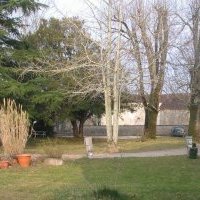
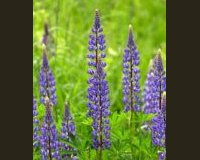
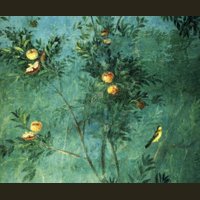
 Version imprimable
Version imprimable

